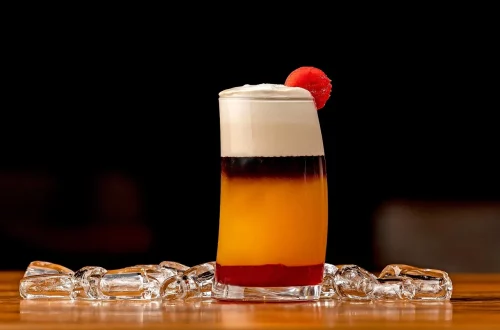-
How Many Ounces Are in 75 Grams? A Simple Conversion Guide
Understanding measurements and conversions is crucial in various fields, including cooking, science, and even medicine. Many individuals often find themselves in situations where they need to convert units of measurement, particularly when it comes to weight. One common scenario is when you encounter a recipe that uses grams while your kitchen scale only displays ounces, or vice versa. This can lead to confusion and may affect the outcome of your culinary creations. The metric system, which includes grams as a unit of measurement, is widely used around the world. In contrast, the imperial system, which uses ounces, is predominantly employed in the United States. This disparity can create challenges for…
-
How Many Ounces is 56 Grams? A Simple Conversion Guide
Converting measurements in the kitchen or while cooking can often feel daunting, especially when you find yourself dealing with different units of weight. Understanding how to convert grams to ounces is not only useful for home chefs but also for anyone who engages in baking, meal prep, or even nutritional tracking. The metric system, which uses grams as a standard unit of weight, is widely used around the world, while the imperial system, which includes ounces, is still prevalent in the United States. This discrepancy can lead to confusion, particularly when following recipes or dietary guidelines that utilize different measurement systems. Knowing how to accurately convert between these two units…
-
How Many Ounces Are in 90 Grams? A Quick Conversion Guide
Understanding weight conversions is essential in various fields, from cooking to science and beyond. When dealing with recipes, nutritional information, or scientific experiments, knowing how to convert between grams and ounces can make a significant difference. Grams and ounces are two common units of measurement, yet they belong to different measurement systems: grams are part of the metric system, while ounces are used in the imperial system. This distinction can sometimes lead to confusion, especially for those accustomed to one system over the other. In the culinary world, accurate measurements can affect the outcome of a dish. A slight change in the amount of an ingredient may alter the flavor,…
-
Understanding the Conversion: How Many Grams Are in a Measurement?
Understanding measurements can often seem daunting, especially when it comes to converting units. Whether you’re a home chef trying to perfect a recipe, a scientist conducting experiments, or simply someone interested in understanding the world around you, grasping the concept of grams and their equivalents is essential. Grams are a metric unit of measurement commonly used to quantify mass. The metric system, known for its simplicity and ease of conversion, allows for consistent and straightforward calculations, making it a preferred choice in many fields. In our everyday lives, we encounter various scenarios that necessitate converting measurements. From cooking to crafting, understanding how many grams are in a specific measurement can…
-
How Many Grams Are in 7.4 Ounces? A Simple Conversion Guide
When it comes to cooking, baking, or even dietary tracking, understanding measurements is crucial. One common challenge many face is converting between different units, especially when recipes or nutritional information use ounces instead of grams. Ounces and grams are both units of weight, but they belong to different measurement systems. Ounces are part of the imperial system, commonly used in the United States, while grams are part of the metric system, which is widely used around the world. The confusion often arises when individuals encounter recipes or nutritional labels that use these different units. For instance, if you come across a recipe calling for 7.4 ounces of an ingredient, converting…
-
Understanding the Value: How Much is 28 Grams?
In our daily lives, we often find ourselves measuring and weighing various items, from groceries to supplements. The measurement of weight, particularly in grams, is a common practice that aids in understanding quantities and proportions. However, the significance of a specific weight, such as 28 grams, can vary depending on the context. This seemingly modest amount can represent different values across various domains, including culinary applications, nutritional guidelines, and even legal considerations. When discussing 28 grams, it’s essential to recognize its equivalence to one ounce, a unit widely used in cooking and food labeling. This measurement has become increasingly relevant in discussions surrounding portion control and dietary recommendations. Understanding what…
-
How Many Ounces Are in 17 Grams? A Simple Conversion Guide
Understanding measurements and conversions is a vital skill in various aspects of life, from cooking to science. When it comes to weighing ingredients or substances, especially in cooking or nutritional contexts, knowing how to convert between different units can significantly enhance accuracy and effectiveness. Grams and ounces are two commonly used units of measurement, especially when it comes to food and nutrition. While grams are widely used in most countries around the world, ounces remain popular, particularly in the United States. The challenge arises when you need to switch from one unit to another. For example, how do you convert grams into ounces? This conversion is essential for recipes that…
-
How Many Ounces Are in 125 Grams? A Simple Conversion Guide
In the world of cooking and baking, precise measurements are crucial for achieving the desired results. Different countries utilize various measurement systems, and this can often lead to confusion, particularly when converting between grams and ounces. Grams, a metric unit, are widely used globally, especially in scientific contexts, while ounces are more common in the United States and a few other countries. Understanding how to convert between these two units is essential for anyone who enjoys cooking, baking, or even just measuring ingredients for dietary purposes. The challenge often lies in the need for accuracy, as even slight variations in ingredient proportions can impact the final outcome of a recipe.…






























